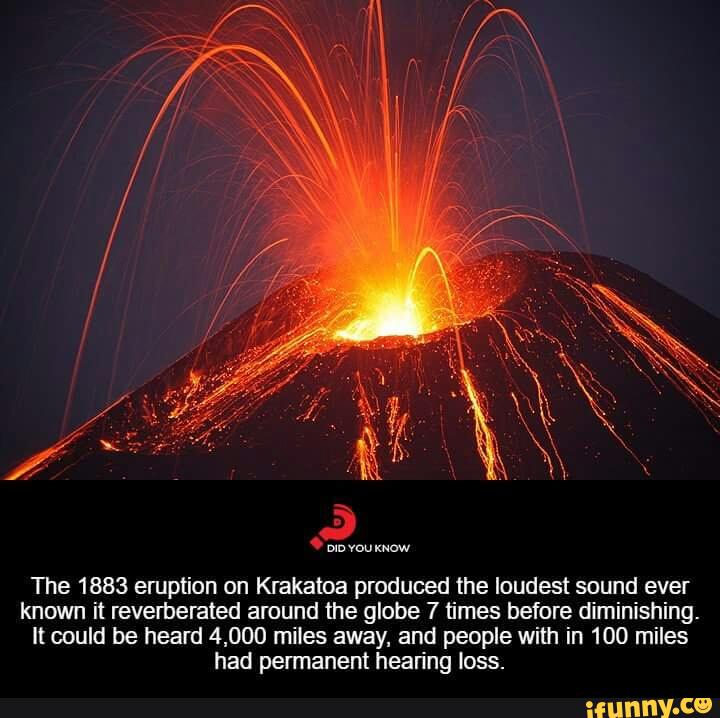The eruption of krakatoa in 1883 was the loudest sound in recorded history heard 3 000 miles 4800 km away

The Loudest Sound in History: The Eruption of Krakatoa in 1883

In the annals of recorded history, there are numerous natural disasters that have captured the attention and awe of people around the globe. One such event occurred in 1883, when the world witnessed the cataclysmic eruption of Krakatoa, an island volcano located in the Sunda Strait between the islands of Java and Sumatra in Indonesia. This volcanic eruption is renowned for producing the loudest sound ever recorded, which was heard a staggering 3,000 miles (4800 KM) away.
The Krakatoa Eruption and its Devastation

On the morning of August 26, 1883, the inhabitants of the region were greeted with a massive explosion from Krakatoa, an eruption that would go down in history as one of the most catastrophic volcanic events ever witnessed. The eruption released an incredible amount of energy, resulting in a series of tsunamis and pyroclastic flows that obliterated surrounding coastal communities.
As the colossal plumes of ash and gas shot up into the atmosphere, it is unimaginable to comprehend the level of intensity that must have accompanied the eruption. The sheer force created an explosion that registered approximately 310 decibels, shattering eardrums of those in its vicinity. To put this into perspective, a sound over 120 decibels can cause physical pain and even permanent hearing loss.
The Unbelievable Soundwave and its Far-reaching Impact
But it was not just the local population that experienced the wrath of Krakatoa’s volcanic fury. The astonishing sound generated by the eruption carried over vast distances, defying all expectations. This tremendous explosion resonated through the air, traveling across oceans and continents, and was heard as far as 3,000 miles (4800 KM) away.
The soundwave reached remarkable distances, with reports of people hearing it in areas as distant as Australia, India, and even the island of Rodrigues in the Indian Ocean. The reverberations lasted for several hours, leaving witnesses in awe of the power unleashed by the eruption.
A Sonic Boom of Unprecedented Scale
The eruption of Krakatoa in 1883 not only shattered glass windows and caused buildings to collapse within a 100-mile radius but also reverberated across the globe. The immense power and energy unleashed by the volcano created a sonic boom that dominated the Earth’s atmosphere, a testament to the enormity of the event.
Scientists and researchers have since estimated that the soundwaves generated by the eruption traveled around the world not once, but multiple times. This phenomenon, known as the “Skrjabins” effect, was caused by the soundwaves bouncing off the Earth’s surface and returning to the eruption site, amplifying the intensity and distance of the sound.
A Modern-day Record Holder
To this day, the eruption of Krakatoa in 1883 remains unparalleled in terms of its sonic impact. The eruption and the subsequent soundwave stand as a testament to the incredible forces that lie within our planet.
As we reflect on the awe-inspiring power of nature, it is a reminder of the immense scale on which our planet operates. The eruption of Krakatoa serves as a humbling reminder of the fragility of human existence in the face of Earth’s raw and untamed power.
Source: Wikipedia - Krakatoa
Tags
Share
Related Posts
Quick Links
Legal Stuff

